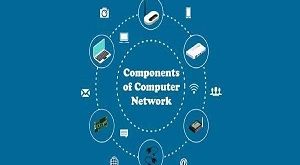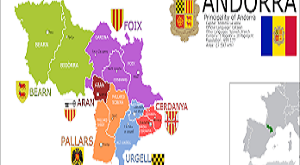Yemen’s History
The world’s most horrendously awful compassionate emergency is unfurling in Yemen. Indeed, even before the ongoing conflict, this desert country on the edge of the Bedouin landmass, home to 28 million individuals, was at that point the most unfortunate country in the Middle Easterner world. It wasn’t generally like that, yet Yemen’s perplexing history can assist us with figuring out the ongoing clash. Here is a concise timetable appearance how occasions and tensions have joined overwhelming everything in the vicinity.
Early History
Yemen has assumed a little by huge part in world history. The Sovereign of Sheba in the Jewish Book of scriptures and the Three Wise Men of the New Confirmation are generally connected to Yemen. While espresso maybe began in Ethiopia, Yemen for quite a long time was the essential maker, traded through the unbelievable (and presently delightful) port of Mocha. For some time Yemen was doing great to such an extent that the Romans referred to the area as “Arabia Felix,” prospering (or blissful) Arabia.
19th Century: The Arrangement of The present Yemen
This is the point at which the political shapes of the present Yemen truly began to arise, with unmistakable northern and southern locales, whose ancestral, strict, geographic divisions actually convolute Yemeni legislative issues today.
1839: As a feature of their Realm, the English set up a protectorate around the port city of Aden and rule southeastern Yemen.
1918: Shia imams proclaim a realm in North Yemen and gain freedom from the Ottoman Domain.
1960s: A tactical defiance and six-year nationwide conflict during the 1960s, in which Saudi Arabia and Egypt upheld inverse sides, topples the realm and lays out the Yemen Middle Easterner Republic.
1967: The English leave southern Yemen, and Individuals’ Republic of Southern Yemen is made.
1970: Individuals’ Republic turns into the communist Individuals’ Vote based Republic of Yemen, known as South Yemen, a client territory of Moscow. Pioneers in both north and south Yemen face occasional common uprisings and fretful clans.
1990: The finish of the Virus War a year sooner gets significant change Yemen. Socialist appropriations to south Yemen vanish, and the two Yemens converge into one. Not long after unification, President Ali Abdullah Saleh incites an emergency with Yemen’s Inlet neighbors and the US by declining to censure Saddam Hussein’s August 1990 intrusion of Kuwait.
1994: Stewing north-south strains erupte, with President Saleh sending military to pulverize a southern freedom nationwide conflict. (The Southern Temporary Committee, which in June 2018 held onto control in pieces of the south, outgrew this southern autonomy custom).
The Danger of Psychological warfare
2000: 17 U.S. work force are killed in the October bombarding of the USS Cole in Aden, concentrating on a quickly extending fear monger danger inside ungoverned regions in Yemen as a branch-off of Al Qaida known as Al Qaida in the Middle Eastern Landmass (AQAP).
2004: As the US and others push President Saleh to focus on battling AQAP, Saleh dispatches a progression of severe fights, supported by Saudi Arabia, against northern Yemeni Zayidi Shia contenders known as Houthis, whom he blames for dissent and of attempting to force their strict universality on the state. The Houthis, thusly, gripe of segregation and disappointment under Saleh’s despotic rule. (Yemen’s populace is 40-45% Zayidi Shia, with Sunni Muslims making up the vast majority of the rest of. Zayidi Shi’ism is unmistakable from Iran’s Shi’ism.)
2008: Eighteen Yemenis are killed in a September 2008 fear based oppressor assault against the U.S. Consulate in the capital Sana’a. Concerns develop about AQAP and the US trains Yemeni counter-psychological oppression powers and uses equipped robots to target thought fear monger pioneers.
2011: One such robot strike kills AQAP pioneer (and U.S. resident) Anwar al-Awlaki. The approach of robot strikes draws analysis for bringing about regular citizen passings. With Yemen’s thoughtful conflict making security vacuums in many pieces of the country, AQAP stays a danger today and is the defense given by the Unified Middle Easterner Emirates and others for their troop presence in southern Yemen.
Fracture and Calamity
2011: In Yemen’s variant of the Bedouin uprisings, fights in Sana’a at first focus on debasement and monetary difficulties. Requests for far and wide government changes develop, filled to some extent by losses from the blundering government reaction. Yemeni columnist and dissident Tawakkul Karman turns into the substance of the fights for her job in putting together requests for regard for basic liberties and is later mutually granted the 2011 Nobel Harmony Prize. Worried about flimsiness in their patios, Yemen’s Bay neighbors draw on U.S. support and their own monetary muscle to convince President Saleh to leave for his VP, Abderabbu Mansour al-Hadi, in a temporary plan known as the Bay Participation Gathering (GCC) drive.
2012: As a component of the GCC drive, Saleh gets invulnerability from neighborhood indictment and Hadi runs unopposed for a two-year term as temporary president. Today Hadi, obviously, remains leader of Yemen’s formally acknowledged, yet banished, government.
2013: Upheld by the Security Committee and as called for in the GCC drive, UN Exceptional Emissary Jamal Benomar works with a Yemeni Public Discourse Gathering (NDC), with cooperation from Yemen’s different political gatherings (counting delegates from the fretful south and the Houthi ideological group named Ansar Allah) and common society.
2014: The NDC result is delivered and lauded inside and outside Yemen as a model of give and take and of comprehensive portrayal. In addition to other things, the NDC record expands Hadi’s expression for a year to regulate finish of the progress and multi-party races, gives 50-50 portrayal among north and south in an administrative body, and ensures opportunity of religion and a non-partisan state.
2014: Houthi-Sunni conflicts in the mid year confound execution of the NDC result. Well known fights started by a decrease in fuel sponsorships eject against the Hadi government in September, and the Houthis quickly jump all over the chance to move militarily – in this manner breaking the NDC in which they had (hesitantly) partook. Aligned with previous President Saleh, their previous foe, the Houthis rapidly win.
February 2015: Hadi and his bureau, after momentarily being kept locked down by the Houthis, escape to Saudi Arabia, leaving the Houthis in viable, if not legitimate, control of the foundations of the state.
March 2015: The Saudi-drove military mediation in Yemen starts with the expressed objectives of turning around the Houthi military victory of Yemen, reestablishing the Hadi government to Sana’a, getting Saudi Arabia’s southern line from Houthi assaults and air-strikes, and forestalling outside (e.g., Iranian) obstruction on the Bedouin Promontory.
April 2015: While not embracing military activity itself, the UN Security Committee takes on Goal 2216, supporting the political objectives of Houthi military acquiescence and return to UN-worked with political discussions.
Today:
More than over two years after the fact, Yemen’s conflict comprises of a few particular however covering parts – Houthis versus the Saudi-drove alliance, Houthis against Yemeni Sunnis in spots, for example, Ta’izz, a southern freedom uprising against both Houthi-controlled Sana’s and the Hadi government, an enemy of psychological oppression crusade, and a Saudi-Iranian intermediary war. With triumph in any of these conflicts slippery, the failures are the Yemeni public persevering through the world’s most obviously awful compassionate emergency.
Break will come when worldwide and territorial powers execute and uphold a finish to threats, convey safeguarded, continuous, and huge scope helpful help, and arrive at a political settlement that puts the necessities of the Yemeni nation as a matter of some importance.


